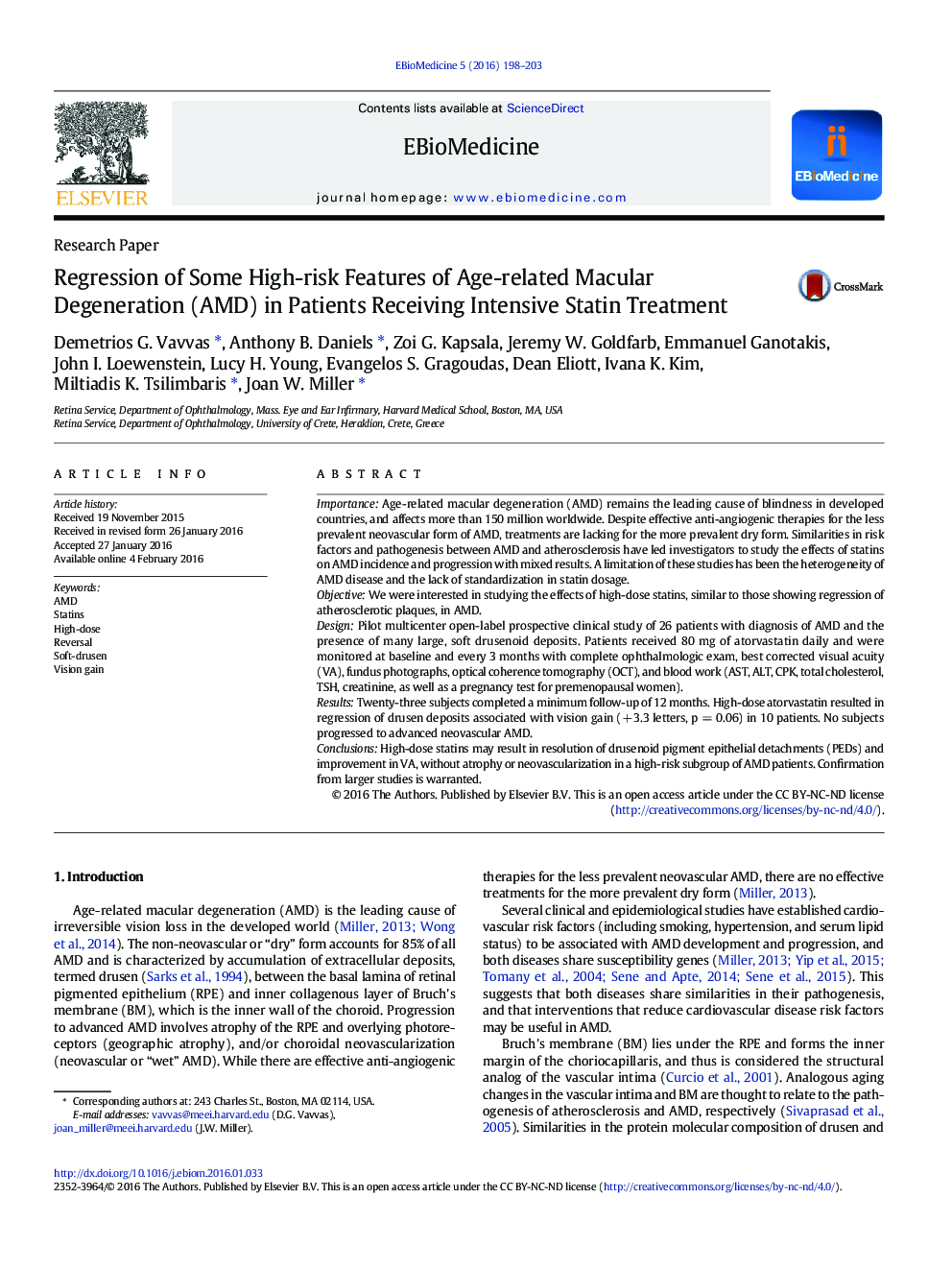| کد مقاله | کد نشریه | سال انتشار | مقاله انگلیسی | نسخه تمام متن |
|---|---|---|---|---|
| 2120962 | 1546894 | 2016 | 6 صفحه PDF | دانلود رایگان |
• High dose lipophilic statin administration was associated with regression of large soft drusen and vision gain in 10/23 AMD patients.
• Duration of treatment before a positive response was observed was usually 1–1.5 years.
• Patients on high-dose statin appeared to be protected from progression to “wet” neovascular-AMD.There is a lack of effective therapies for dry age-related macular degeneration (AMD), one of the leading causes of blindness affecting millions. Although AMD shares similarities with atherosclerosis, prior studies on statins and AMD have failed to show improvement. A limitation of these studies has been the heterogeneity of AMD disease and the lack of standardization in statin dosage. Here, we present for the first time evidence that treatment with high-dose atorvastatin (80 mg) is associated with regression of lipid deposits and improvement in visual acuity, without atrophy or neovascularization, in high-risk AMD patients.
ImportanceAge-related macular degeneration (AMD) remains the leading cause of blindness in developed countries, and affects more than 150 million worldwide. Despite effective anti-angiogenic therapies for the less prevalent neovascular form of AMD, treatments are lacking for the more prevalent dry form. Similarities in risk factors and pathogenesis between AMD and atherosclerosis have led investigators to study the effects of statins on AMD incidence and progression with mixed results. A limitation of these studies has been the heterogeneity of AMD disease and the lack of standardization in statin dosage.ObjectiveWe were interested in studying the effects of high-dose statins, similar to those showing regression of atherosclerotic plaques, in AMD.DesignPilot multicenter open-label prospective clinical study of 26 patients with diagnosis of AMD and the presence of many large, soft drusenoid deposits. Patients received 80 mg of atorvastatin daily and were monitored at baseline and every 3 months with complete ophthalmologic exam, best corrected visual acuity (VA), fundus photographs, optical coherence tomography (OCT), and blood work (AST, ALT, CPK, total cholesterol, TSH, creatinine, as well as a pregnancy test for premenopausal women).ResultsTwenty-three subjects completed a minimum follow-up of 12 months. High-dose atorvastatin resulted in regression of drusen deposits associated with vision gain (+ 3.3 letters, p = 0.06) in 10 patients. No subjects progressed to advanced neovascular AMD.ConclusionsHigh-dose statins may result in resolution of drusenoid pigment epithelial detachments (PEDs) and improvement in VA, without atrophy or neovascularization in a high-risk subgroup of AMD patients. Confirmation from larger studies is warranted.
Journal: EBioMedicine - Volume 5, March 2016, Pages 198–203
